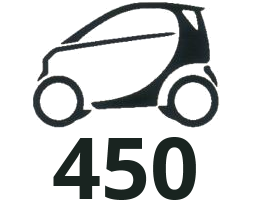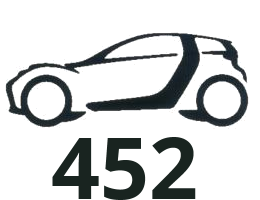Mod Description
Boost gauges are a nice extra but where do you put them so they fit in with everything else?Mod Details
PremiumNo Difficulty



 Mod ID231
CreditEvilution
Cost££80
For
Mod ID231
CreditEvilution
Cost££80
For
 Linkhttps://www.evilution.co.uk/mod/digital-boost-gauge-in-a-standard-pod.htm Copy to Clipboard
Linkhttps://www.evilution.co.uk/mod/digital-boost-gauge-in-a-standard-pod.htm Copy to ClipboardIt is becoming more common for people to want a boost gauge in their smart, whether it be for looks or function the end fitment has to look good. Many others including myself have looked at putting a boost gauge in a standard clock or rev pod only to find that the pods are very shallow and the gauges are very deep. I looked at doing the same with a mechanical gauge but wasn’t happy with how it would look.
Eventually I decided to try again but with a cheap digital boost gauge.

First thing to do is get the contents out of it’s case, pliers and a screwdriver will make light work of the aluminium bezel. Once that is off the inside will slide straight out.

This Race-X gauge is made up of 3 PCBs and in it’s original form is too big for the pod we are putting it in.
The 4 brass posts are unscrewed and the back PCB can be pushed against the middle one, wrap some tap around it to hold it in place.

Here is the donor rev pod, everything has been taken out of it, the 2 clips snapped off and the rear moulding snapped off to give a bit of extra room.
I then contacted Metal Monkey and had a new face made up similar to the original but bigger to fit the pod. (not as expensive as you might think).

It’s not immediately clear from the photo but the face is brushed stainless steel with cut out lettering for Boost, Bar and the warning LED. All 3 of these look silver until they are lit by the gauge.

Take the 4 brass posts that you removed and give them 1 turn of electrical tape each, these are to be used as temporary spacers and we don’t want to scratch the stainless steel face while it is being glued into place in the pod.
Take the front part of the pod and lay the 4 covered brass posts in the 4 corners, place the face on top. Ensure the face is aligned so it will sit straight when reassembled.
Run a bead of silicone or decent glue around the circumference of the back of the face and leave to dry. Once dry, screw the gauge to the new face, thread the wires through the pod and attach the pod front. The boost gauge is now ready.

Sensor Fitting
The sensor you get will be very similar to the one below.

It will have three wires (wiring detailed in the next section) and a barbed hose connection. This has to connect to the air inlet manifold, the easiest place to pick up a connection to this is the one that goes to the fuel pressure regulator. This is the same pipe that a dump valve would be connected to.

Cut this pipe, fit a plastic T piece and join the sensor to the new spur.
You have two options. You can use a short section of pipe and have the sensor in the engine bay. This can make wiring a bit harder as all three wires have to pass into the car before being connected.
The best option is to use a length of pipe and extend it inside the car. There is a grommet at the back of the engine bay which enters into the cabin just behind the handbrake.

Push back the carpet in the rear of the car to see were the main wiring loom enters the car. Run the pipe through the grommet and connect to the sensor. The sensor should be small enough to hide underneath the carpet without any problem. The outlet of the sensor could sit facing into the grommet to save extra space.
Wiring
The wiring is quite easy. The gauge and the sensor have three cables each on this model.

The red wire from each part should be attached to a switched live, this doesn’t necessarily have to be the same point. The black wires are the earth points, there is no need to run these back to the battery as you can earth to any part of the car body. Find an earth point or a bolt and attach the earth wires.
The final wire on this unit is white, this is the only wire that has to connect the sensor to the gauge. Extend the white wire, run it carefully through the car and connect it to the white wire of the gauge.
The gauge will now work correctly and will turn on and off with the ignition.


